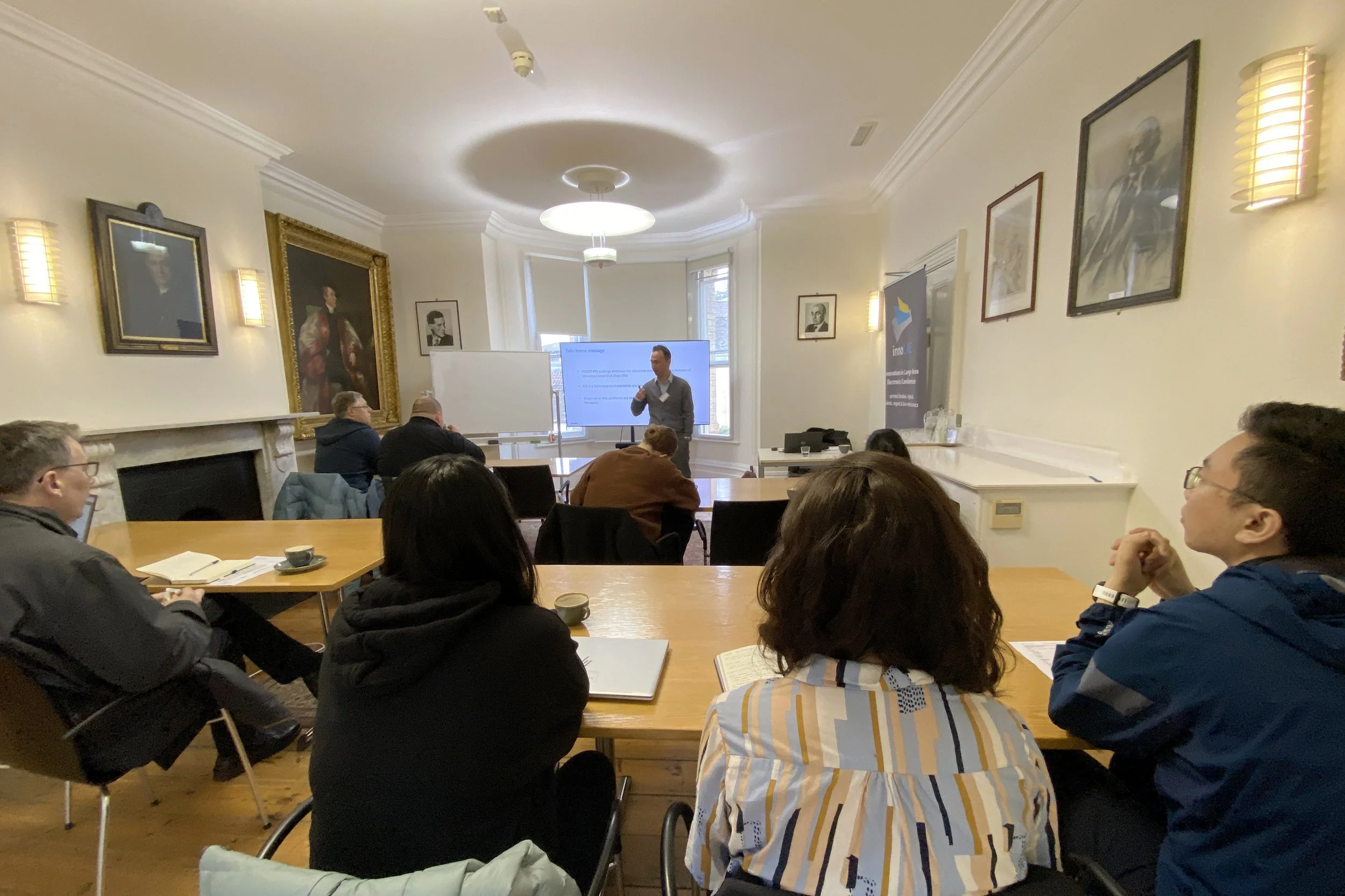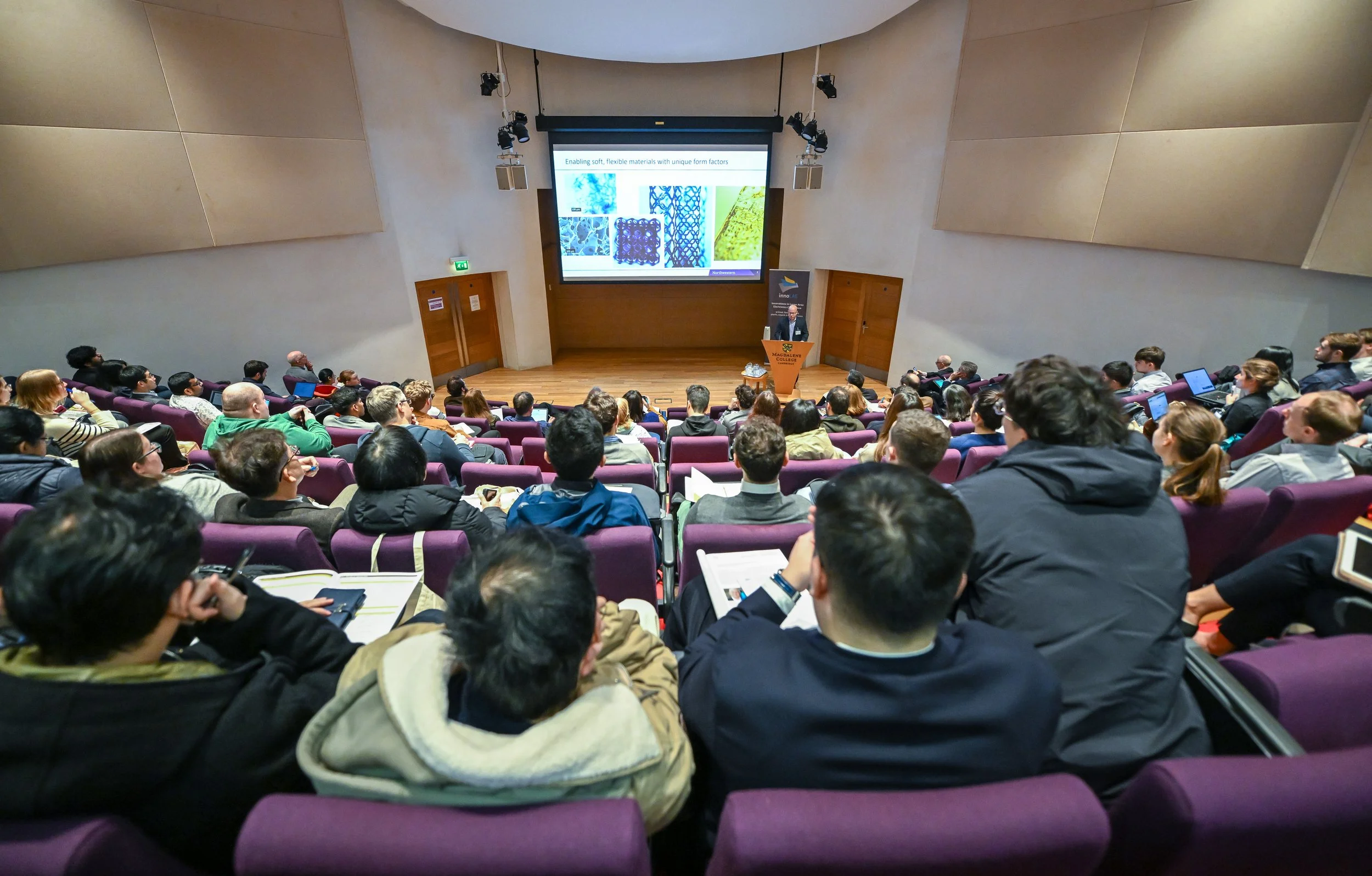Early Bird innoLAE 2026 Sponsorship Packages
InnoLAE 2026 Super Early Bird Discount
InnoLAE 2026 Announces Programme Committee
IMI Europe announces InnoLAE 2026 event
Gallery of InnoLAE 2025 Photos
The Growing Challenges of E-Waste and Rare Materials in Electronics
InnoLAE 2025 - Short course reminder
IMI Europe announces complete InnoLAE 2025 programme
Efficient Large-Area Solar Cells Through Lab-Scale Optimization
Using innovative materials and solution-processing methods, third-generation solar technologies, such as organic photovoltaics (OPVs) and perovskite solar cells (PSCs), could enable the development of lightweight, flexible, and cost-effective solar cells. The easy processing of these devices has led to a dramatic increase in their efficiencies of recent years, with PSCs and OPVs achieving power conversion efficiencies of 26.7% and 19.2%, respectively.
These next-generation solar cells are uniquely suited for a wide range of applications, including wearable technology, portable chargers, building-integrated photovoltaics, and large-scale energy production. Solution processing methods enable rapid deployment and local manufacturing for off-grid energy solutions, even in low-resource areas. This raises the question of how to mass produce these printable solar cells.
The journey from lab-scale research to industrial-scale production hinges on optimizing deposition using scalable coating processes. Coating equipment from Ossila provides the essential tools for this transition by empowering researchers to customize and optimize large-area coating processes in the lab.
Coating Processes in Solar Cell Development
Uniform, high-quality thin films are the cornerstone of efficient third-generation solar cells. When implemented correctly, solution processing can offer precise control over film thickness, morphology, and uniformity. These factors directly impact both the performance and scalability of solar cells.
Traditionally, emerging photovoltaic research has relied on spin coating. This simple and versatile technique can easily create high-quality films with little optimization. However, spin coating is best applied over small area devices and has a high amount of material wastage—only 10% of the applied material creates the thin film. Optimizing small area devices will only go so far in helping emerging electronics get to market.
Transitioning from lab-scale experimentation to industrial-scale production is a complex, but important, process. Small variations in coating processes can lead to significant changes in device efficiency. This makes lab-scale optimization using scalable methods a critical step for ensuring reproducibility and overall success in large-area production.
Lab-Scale Coating Solutions
Ossila has a range of high-performance coating systems for lab-scale thin film research and development. Each product enables researchers to optimize the deposition of large-area coatings for further laboratory testing, laying the foundation for successful industrial-scale production.
Slot-Die Coater
The Slot Die Coater produces continuous films across a large area, operating in a similar way to inkjet printing. Achieve precise, scalable thin film deposition with minimal material wastage and maximum flexibility.
With this system you can:
Control solution dispensing for consistent film formation across a range of substrates.
Optimize coating characteristics by adjusting the coating speed, channel height, stage temperature, and more.
Customize the system to fit a range of experimental requirements with interchangeable accessories.
The slot-die coater is ideal for researchers scaling prototype devices for pre-commercial testing, enabling them to fine-tune multi-layer structures in perovskite and organic solar cells and ensure reproducibility.
Dip Coater
The Dip Coater facilitates large-area batch coatings through the controlled immersion and withdrawal of a substrate in a solution. It is perfect for straightforward and reliable film formation on irregular surfaces or with high-viscosity solutions.
With simple, integrated software, you can:
Set the immersion and withdrawal properties independently for ultimate control.
Customize coating thickness with a wide range of withdrawal speeds.
Vary the withdrawal speed across the substrate length to produce gradient films.
The dip coater is perfect for creating self-assembled monolayers in solar cells and achieving consistent results across experiments.
Automatic Film Applicator
The Automatic Film Applicator is designed to automate many different techniques which use an applicator to spread a solution across a substrate. This versatile system consistently coats large areas with a uniform thickness and roughness.
Within your research, you can:
Automate the movements of a wide variety of manual applicators, including bar coaters, blade coaters, gap applicators, Baker applicators, Bird applicators, and many more.
Adjust coating speeds, blade angles, and pressure control.
Improve precision and repeatability for uniform films across a large area.
This system simplifies the deposition of solar cell layers using a range of techniques over large substrates or foils, making it a valuable asset for researchers focused on scalable coatings.
The Path to Industrial Scale
Producing efficient, large-area solar cells in the lab is the foundation of this route to market. This process begins with the correct techniques and tools to refine and optimize processes at the research stage.
In solar cell research and beyond, coating equipment from Ossila empowers researchers to:
Experiment with materials and fine-tune film properties to meet specific performance criteria.
Evaluate how materials and processes will perform when scaled to larger areas.
Develop robust methodologies that translate seamlessly from the lab to industrial production lines.
Find us in the exhibition hall at InnoLAE 2025 or visit www.ossila.com to explore our coating solutions.
Testing Materials and Iterating Electronic Designs with Voltera
About Voltera
Voltera makes DIW dispensing systems for testing materials and iterating electronics — from traditional printed circuit boards (PCBs) to the flexible, stretchable, conformable, and biocompatible electronics of tomorrow. Its NOVA materials dispensing system supports most screen-printable materials with viscosities between 1,000 and 1,000,000 cps, making it an ideal tool for material research.
With NOVA, researchers can work with conductive inks, dielectric inks, functional inks, solder pastes, adhesive pastes, custom and proprietary inks, and more. From organic electrochemical transistors to piezoresistive strain sensors, Voltera’s systems have empowered universities and research institutions to publish over 300 research papers in journals such as Nature, Advanced Materials, Flexible and Printed Electronics, and more.
According to Precedence Research, the global market for printed electronics was estimated to be USD $16.82 billion in 2024, and is projected to grow to USD $83.77 billion by 2034. Among the technologies used in printed electronics, direct-ink-writing (DIW) stands out as an efficient solution for rapidly testing and iterating electronics designs.
DIW is an extrusion-based additive manufacturing process that deposits conductive inks, solder pastes, and other functional materials onto a substrate layer by layer. Unlike screen, inkjet, or aerosol printing, which require significant overhead to produce an ideal prototype, DIW offers precise dispensing control, support for a wide range of materials, quick turnaround, and high customization with significantly less overhead.
Keynote speech: Printing ECG electrodes with biocompatible gold ink on TPU
At InnoLAE on February 19, 2025, Voltera’s co-founder and Director of Revenue, Katarina Ilić, will present on a dry ECG electrodes project developed last year using gold ink from Creative Materials.
Gold is well known to be biocompatible. It provides high conductivity and is resistant to oxidation. Through this project, Voltera’s applications team successfully validated the use of the biocompatible gold ink for printing dry ECG electrodes on thermoplastic polyurethane (TPU).
Inspired by the electrode design in a prior study [1], the project featured three electrodes, each shaped like a hexagonal labyrinth, that output heart rates into graphs. This design maximized the sensitivity of the electrodes while eliminating the need for wet gel, which can cause skin irritation for some patients.
Learn more about the project here.
More applications
Beyond bioelectronics, such as the gold ECG electrodes mentioned above, the Voltera team has worked on a diverse range of projects across industries, including healthcare, academia, education, energy storage, automotive, and consumer electronics.
Printing a heated mitten with silver conductive ink on cotton fabric
Printing on fabric is a popular method for creating wearable electronics, with one key application being heated gloves and mittens that use heating elements to keep hands warm. Commonly used in outdoor activities like skiing, they also have medical uses, such as improving blood circulation. In this project, Voltera created a heated mitten capable of reaching 40°C when powered at 12V. Read more here.
Printing a magnesium zinc battery with Saral inks on PET
Printed batteries provide a thin, lightweight power solution for electronics. This project involved printing a functional seven-layer battery designed for moderately power-demanding devices such as environmental sensors and wireless communication modules. Read more here.
Printing electroluminescent ink on paper and PET
Electroluminescent displays stand out for their uniform light output, thin profile, flexibility, and durability. In this project, Voltera printed an electroluminescent display on paper and PET that emits blue light, illuminating the Voltera logo with an even glow. Read more here.
Printing a flexible PCB with silver ink on PET
LED applications are popular engineering projects in school. Among these, an LED roulette stands out as it is intellectually challenging and fun. While a roulette circuit is typically printed on a substrate like FR4, printing on a flexible substrate presents further opportunities for education. In this project, Voltera created a multilayer LED roulette circuit that maintains functionality despite flexing. Read more here.
Printing an RFID tag with copper ink on paper
Radio Frequency Identification (RFID) is widely used for material monitoring and validation, wireless communication, and Internet of Things (IoT) development. In this project, Voltera created an ultra-high-frequency RFID tag with a minimum self-reflection coefficient of -29.42 dB at 922.50 MHz, exceeding the performance of off-the-shelf tags from market leaders. Read more here.
Join our community
With over 92 countries served, Voltera is proud to support the academic community through our innovative electronics printers, services, and materials. Speak with an applications specialist by booking a meeting here or subscribe to our monthly newsletter, for industry updates and Voltera's latest content.
References
[1] Elango, P. F. M., Dhanabalan, S. S., Robel, M. R., Elango, S. P., Walia, S., Sriram, S., & Bhaskaran, M. (2023). Dry electrode geometry optimization for wearable ECG devices. Applied Physics Reviews, 10(4). https://doi.org/10.1063/5.0152554.






















